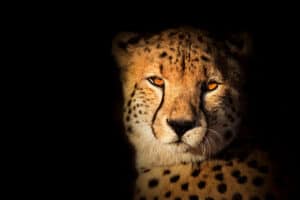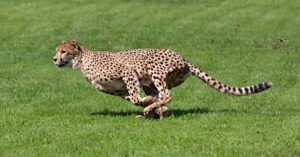Ask anyone to picture a cheetah and they likely describe a large, slim, super-fast cat covered in spots. Most people assume they are much like other big cats, such as lions, tigers, or leopards. But actually, they have some significant differences that help them chase down their fast-moving prey on the African savanna. For example, they have long tails, aerodynamic bodies, and powerful legs that help them leap up to 23 feet! In this article, we’ll explore how cheetahs are different from other large cats, how they run so fast, and why they have those distinctive spots. We’ll also let you know their alarming conservation status and how you can help preserve them for the future.
How Are Cheetahs Different from Other Cats?
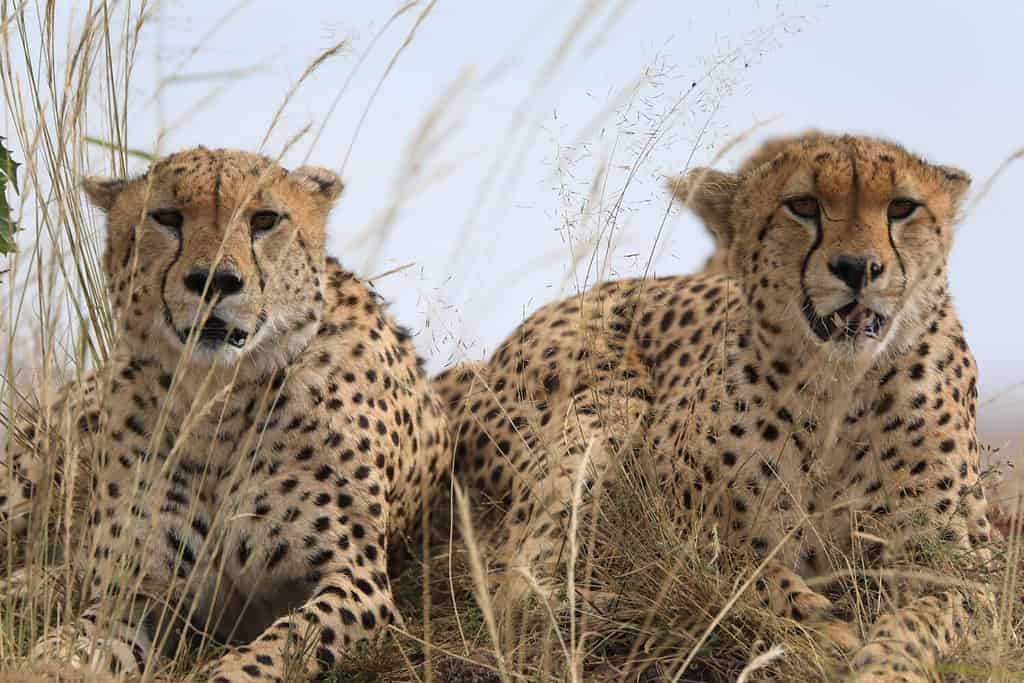
The 8,000 cheetahs left in the world are genetically identical, though each has a unique pattern of spots.
©Travelnshot/Shutterstock.com
Differences From Other Big Cats
Cheetahs are members of the Felidae family, but they differ from other cats in interesting ways, many of which are adaptations to help them hunt their prey.
- Big cats like lions and tigers are members of the genus Panthera. Cheetahs are the only species in a different genus: Acinonyx.
- Panthera cats have a specially adapted larynx that enables them to roar. Cheetahs cannot roar but instead make a chirping sound. They can also purr, like most cats.
- Cats have a great deal of genetic diversity, but the 8,000 or so cheetahs in the world are genetically identical. This does not bode well for the long-term survival of the species.
- They have non-retractable claws and some other anatomical features that help them run much faster than other cats.
Differences From Leopards
Sometimes people unfamiliar with big cats confuse cheetahs and leopards because they both have black spots. They’re actually very different cats with very different appearances though. Here’s how to tell the difference:
- Leopards live in most of Africa, the Middle East, and South and Southeast Asia. Cheetahs live only in sub-Saharan Africa.
- Cheetahs are taller and skinnier than leopards.
- Leopards do not have tear lines on their faces as cheetahs do. These are most obvious when you look at the cheetah face-on.
- Cheetahs have amber-colored eyes while leopards have blue-green eyes.
- Cheetahs hunt in the day while leopards hunt at night. Cheetahs have also been known to hunt on nights of bright moonlight, but nighttime is not their preferred time to hunt.
The cats that are truly hard to distinguish from one another are leopards and jaguars. Jaguars are heavier, have more distinct spots, and live in South and Central America, but the two species can be difficult for non-experts to distinguish from photos.
What Makes Cheetahs So Fast?

Cheetahs can run up to 70 mph and use their tails and claws to make sudden sharp turns.
©JonathanC Photography/Shutterstock.com
Cheetahs can sprint at top speeds between 60-70 mph. They can accelerate from 0 to 60 in just 3 seconds – as fast as a Lamborghini Huracàn STO. This speed is necessary to overtake prey like antelope, wildebeests, and other fast-moving prey. It takes a tremendous amount of energy, though, so it only does so in short bursts and then may need to rest for 30 minutes to recover. These are some of the adaptations that help it achieve such speeds:
- Non-retractable, dog-like claws for traction
- A long tail for balance when making sharp turns
- Long hind legs to make jumps of up to 23 feet
- A small, aerodynamic head like a bike helmet
- Eyes situated high on the head for tracking prey
- Very light bodyweight
- A highly flexible spine that can twist without injury
Why Do Cheetahs Have Spots?
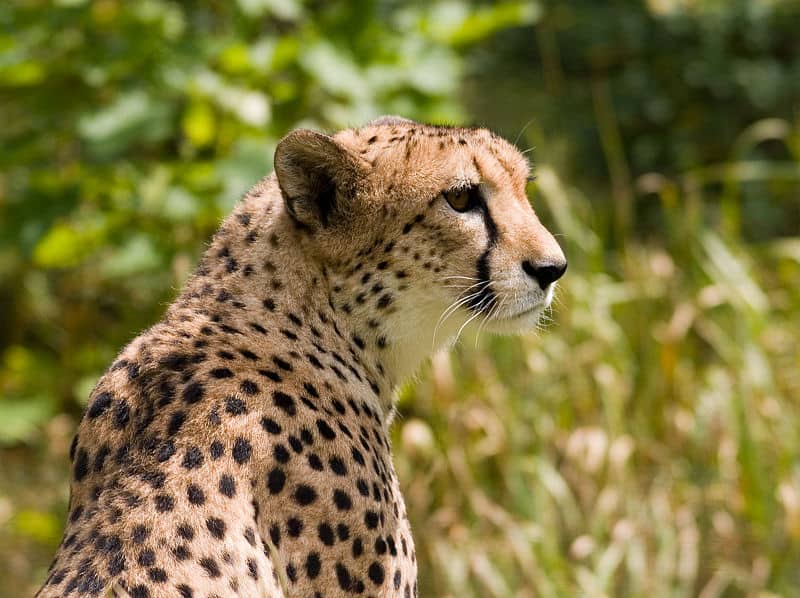
Cheetahs have dark tear lines on their muzzles that help reduce the sun’s glare.
©schani, CC BY-SA 2.0, via Wikimedia Commons – License
Cheetahs are known for their speed. However, because running expends so much energy, they prefer to lie in wait for gazelles and other fast-moving prey. The spots camouflage them in the African savanna so that unsuspecting herbivores will graze closer to them. When the distance is short enough, they explode from the grass in a burst of speed to outrun their prey quickly.
As daytime hunters, cheetahs have black tear lines around their eyes to protect them from the sun’s glare, much like eye black used by football players. Each animal has up to 3,000 spots in a unique pattern that wildlife officials can use to recognize specific individuals. And if a cheetah was “on the run” from the law and wanted to disguise itself from the authorities, it couldn’t just shave its fur. The spots are imprinted in the skin itself, and the hair takes on the color of the skin beneath it.
Cheetah Conservation
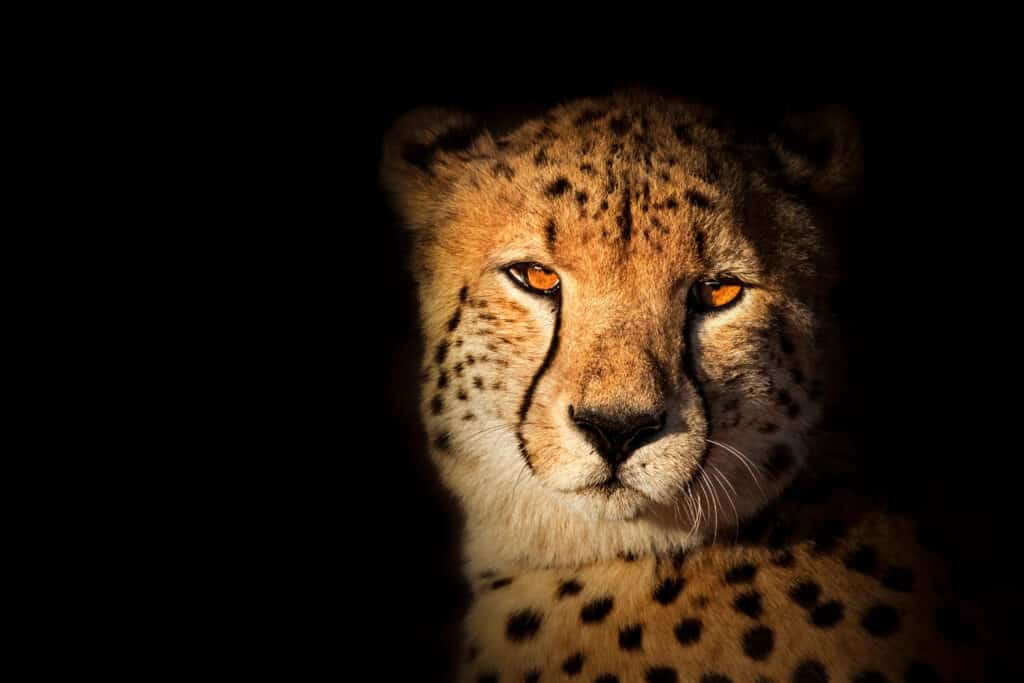
Experts say the cheetah is functionally extinct, meaning numbers have declined to an unrecoverable level.
©Henrico Muller/Shutterstock.com
Cheetah Conservation Status
The conservation status of these magnificent and beloved animals is “vulnerable”, and they are in decline in their African habitat. Within the last 50 years alone, they have gone extinct in 13 African nations. Now they live in only 9% of their historic range of Africa, the Middle East, and India. Recently, wildlife officials have attempted to reintroduce the species to India. Sadly, some wildlife officials consider the cheetah “functionally extinct,” meaning that they believe the population has declined to the point that it will not be able to recover. A part of this is the lack of genetic diversity in the cheetah population.
Threats to Cheetahs
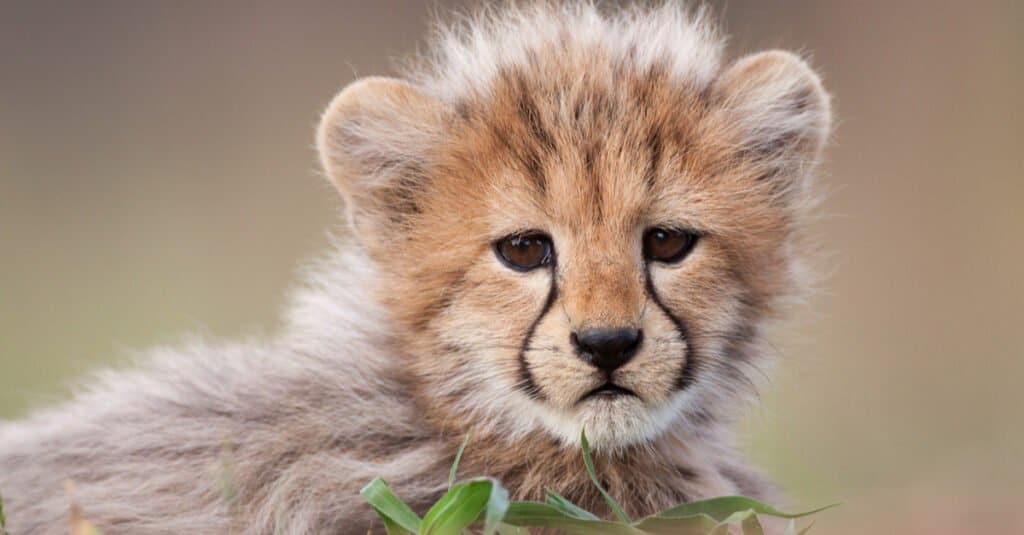
The black market trade in live cheetahs for pets or zoos is one of the reasons they are vulnerable to extinction.
©Stu Porter/Shutterstock.com
The main threats to cheetahs are the black market in live wild animals and animal hides and trophies, hunting by farmers and ranchers protecting their livestock, and loss of habitat and prey species. Urbanization and the increase in agricultural land have left cheetah habitats fragmented from one another. This makes unhappy encounters with people more frequent and prevents cheetahs from migrating as they need to in search of prey and mates and prey. Overhunting of gazelles and other species by humans for bushmeat reduces the hunting prospects for cheetahs.
How Can You Help?
Some ways to help cheetahs and other endangered species include:
- Learning more about the species and how to help it and sharing that information with others who might like to help.
- Donating or organizing fundraisers for organizations like the Cheetah Conservation Fund.
- Going on an eco-friendly trip to Africa to see cheetahs in the wild with a reputable organization. These can include volunteer opportunities and they create a financial incentive to the local population to preserve the cheetah population.
- Contacting elected officials in your government and in foreign governments where cheetahs have habitat to express your support for funding and legislation to conserve endangered species.
The photo featured at the top of this post is © iStock.com/StuPorts
Thank you for reading! Have some feedback for us? Contact the AZ Animals editorial team.





